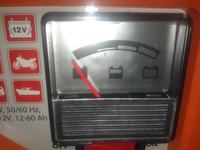I wonder why regulators in alternators ensure that the voltage does not exceed 14.0÷14.2V?
As for durability: 1- the life of the battery is determined by the number of complete discharge-charge cycles and in the era of a multitude of energy consumers, this number is exhausted faster. It used to be just starting, and now there is an alarm, radio, computer, watches and other gadgets with the engine turned off,
2-producers are not interested in the durability of anything, because they would have no market. So every 3÷4 years you have to buy a new one.
3- the users themselves took better care of their batteries, because there was a problem with the new ones. Is anyone nowadays interested in the amount of water or the density of the electrolyte (of course, it is often impossible, but even where it can be checked, no one bothers so much. Why, it says MAINTENANCE-FREE.






